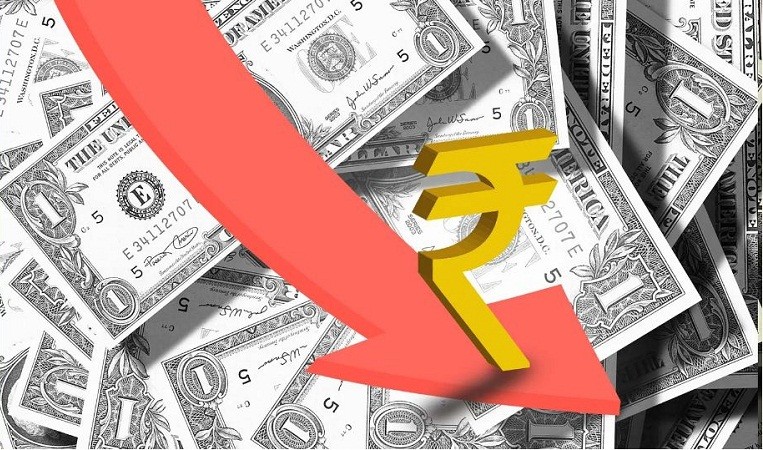
The value of the rupee has been continuously depreciating in the international markets for the past few days. Around one dollar has risen to Rs 79.77. It is also observed that by July end it may touch 82 level. Market analysts have cited the increase in interest rates by the US Federal Reserve and the increase in crude oil prices in the international market as the reasons for the fall in value. But in what ways does the depreciation of the Indian rupee affect our economy and how it affects a society and the life of common people is examined in this article.
The world is a global village. It is not possible for any nation to survive in this world alone using only its own domestic resources. Because no country is self-sufficient in terms of resources. So every country imports and exports goods and services from other countries. Payments for these trade transactions are made either in the currency of the exporting country or in US dollars. This is where fluctuations in the value of the currency become a matter of considerable debate.
Suppose you want to buy something from a company in the United States. The price of the item is 10 dollars. If the current exchange rate is one hundred rupees per dollar, the cost of the item is Rs 1,000. When you buy a similar product again at the same price, the product was priced the same in the American market. Or 10 dollars. But because he was an Indian customer or the transaction was in Indian rupees, he had to pay 1,500 rupees instead of 1,000 rupees. Because according to the current exchange rate, one dollar has become Rs.150. This is called the depreciation of the currency. Although it may seem completely negative on the surface, there are implicitly some positives.
A significant advantage is a steady increase in the nation's exports. When does a seller want to sell most of his inventory? When does he expect the best profit. But depreciating the Indian currency means paying more Indian rupees per dollar. Or, goods shipped from India fetch more Indian Rupees in return. A product which was transacted at Rs 100, is now fetching Rs 150. A profit of Rs.50 is earned. Therefore, in case of depreciation of the currency, exports will increase exponentially. This becomes more evident when we look at the export rate and the exchange rate of the Indian rupee last June. India's merchandise exports in June 2022 16. It was up 8 percent to 37.9 billion US dollars. It was the best export of the year. But when it comes to exchange rates, June shows the highest depreciation of the year if July rates are set aside. Or it was at the rate of 79.05 rupees per dollar. This is a good example of the fact that export rates rise in the face of devaluation.
Depreciation is used to reduce the trade deficit. A trade deficit is actually a situation where a country's imports exceed its exports. It has been said that exports will flourish in the face of devaluation. That is, when there is an increase in the country's exports, naturally there is a gradual decrease in the trade deficit. Let's look at an example. The monthly value of India's merchandise exports stood at USD 37.29 billion in May 2022, according to figures released by the Union Ministry of Commerce and Industry. This shows an increase of 15.46 percent compared to USD 32.30 billion in May 2021. But if we look at the exchanging rate for May 2022, it becomes clear that it was a month of massive depreciation.
Will the depreciation of the rupee affect the common man?
The entire economy will be involved in the depreciation of a currency. It includes producers, consumers, investors and government, and every person connected with the country's economy. It's just that everyone will be involved in different ways and shapes. Rising prices of all consumer goods in the market is one of the most serious issues affecting the common man. There are three main reasons behind this. One is the increase in the price of imported goods. Second, reduction of products in the domestic market due to increase in exports. Third, the increase in the price of fuel due to the increase in the price of crude oil in the international market. Fluctuations in fuel prices have a huge impact on an economy. Construction, Transport, Service, It will affect entire sectors like distribution. Due to these reasons, there will be an increase in the price of the existing goods in the market. Or, you may have to pay 150 rupees for a property that was being bought for 100 rupees. Such continuous price increases are known as inflation.
The Consumer Price Index (CPI) is a tool currently used by the Ministry of Statistics and Program Implementation (MoSPI) to estimate inflation in the market. This index measures changes in prices of a group of consumer goods used in daily life. This index can be used to understand the current market behavior at a glance. According to the latest estimate (July 12, 2022) released by the Ministry of Statistics, the CPI rate for June 2022 increased by 8.8 percent over the previous year and by 1.1 percent on a monthly basis. The exchange value of the rupee in the month of June is also very high. Hence, it can be concluded that the goods in our market are also affected by the impact of depreciation.
Economic issues are not something that any country can confine to its own jurisdiction. No country can control it completely. Because there is no country in the world that geographically contains all the resources. Therefore, economic problems such as price increase, depreciation, inflation and trade account deficit are constantly changing. Some countries may be able to mitigate its impacts to some extent. But at present no nation can afford to escape such economic shocks completely.